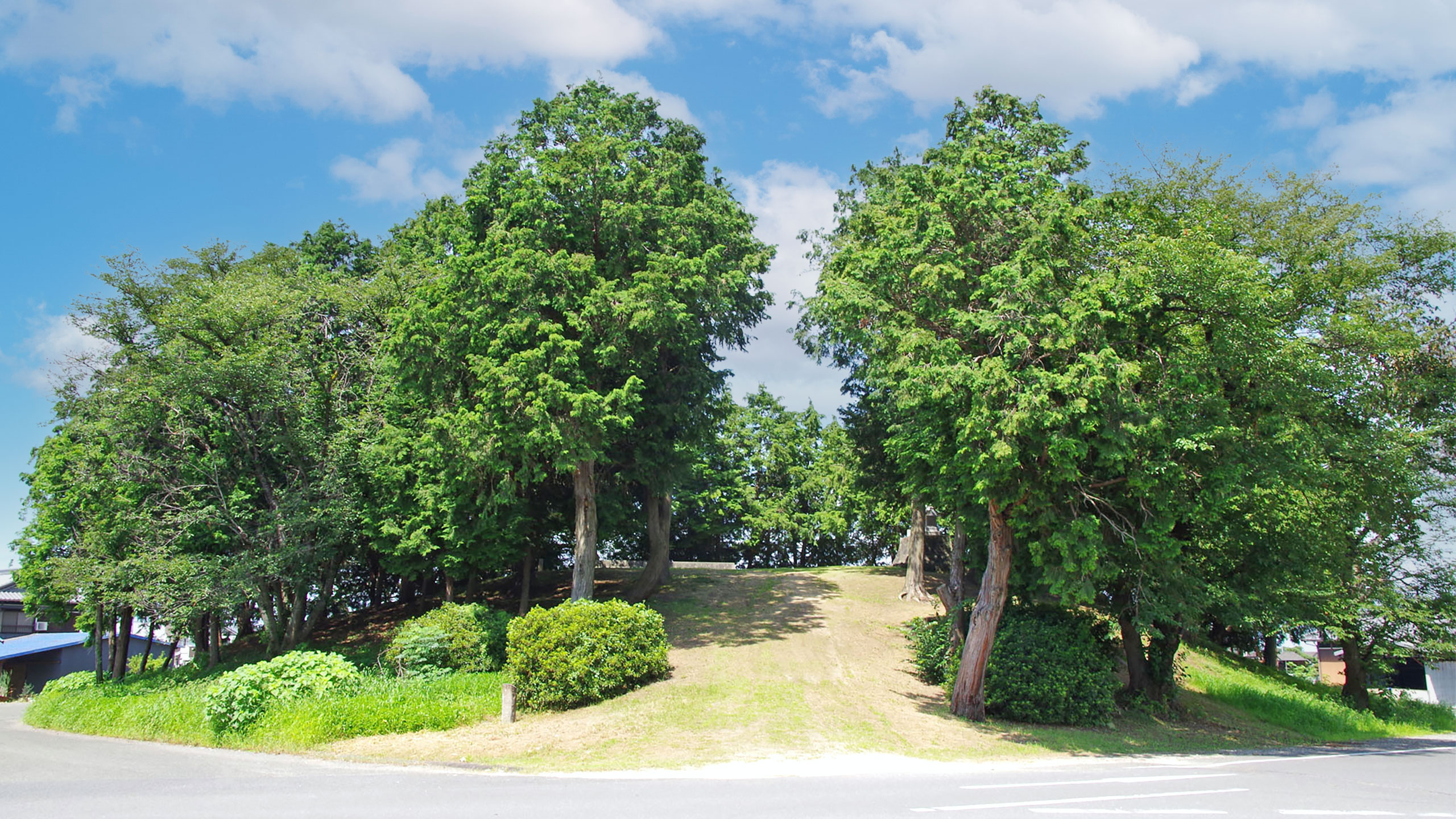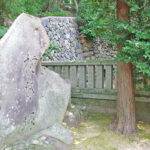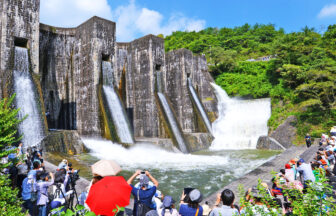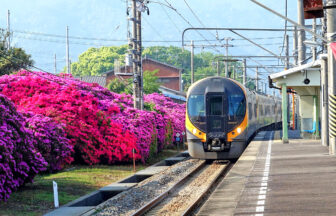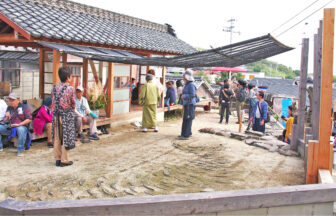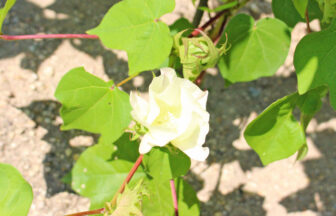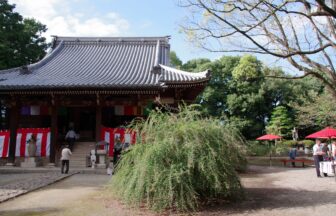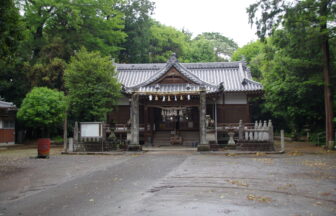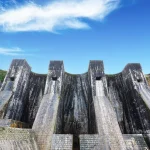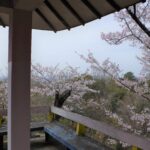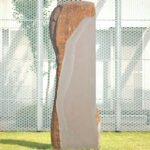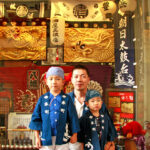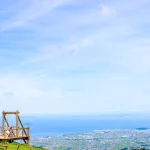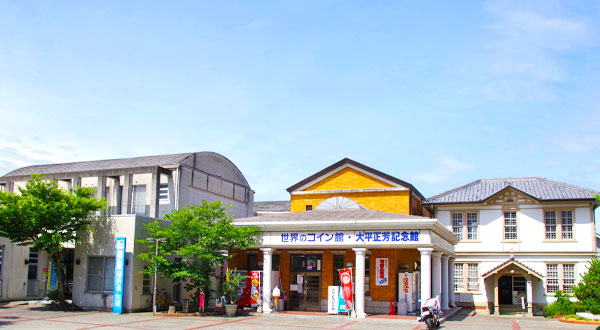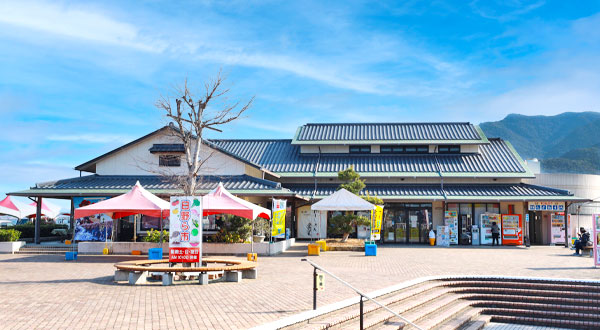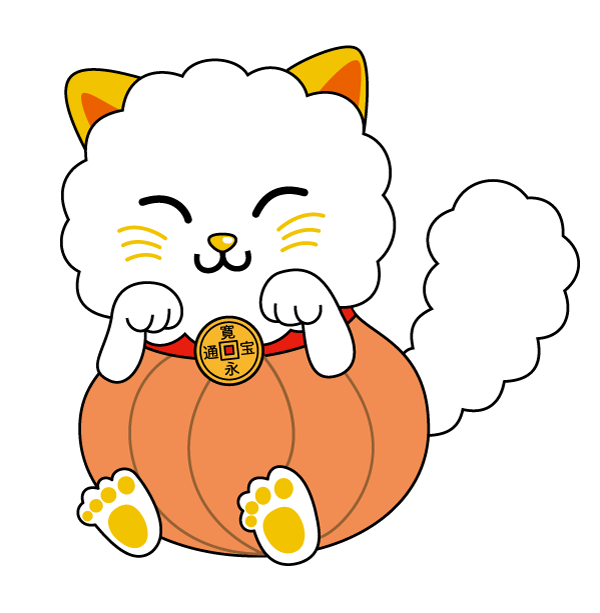Hiratsuka burial mound is a burial mound located in Hiratsuka, Onohara, Onohara-cho, Kanonji City.
The top of the burial mound serves as the Onohara Hachiman Shrine’s tribute hall, and during the autumn festival, “danjiri” or “chosa” climb to the top of the burial mound to offer sacrifices.
The mound is circular in shape, and with a diameter of 50.2 m and a height of approximately 7 m, it is the largest circular mound in Kagawa Prefecture. The burial facility in the main part is a double-sleeved, side-anchored stone chamber, which opens to the south-southwest. Although it is a single-chamber stone chamber, it is said to have remnants of a double-chamber structure, such as the slightly lowered and elevated ceiling stone at the entrance to the envy way and the stone of the envy gate protruding slightly inward. Sandstone is mainly used as the stone material, but granite is used only for one of the ceiling stones of the envy way. The back wall of the chamber is constructed in three tiers, and the left wall is constructed in four tiers. Excavated artifacts include a Sue ware bowl, a Takatsuki bowl, a jar, and an earthenware jar. On October 7, 2015, it was designated as a National Historic Site as the Onohara Kofun Tumulus Group.
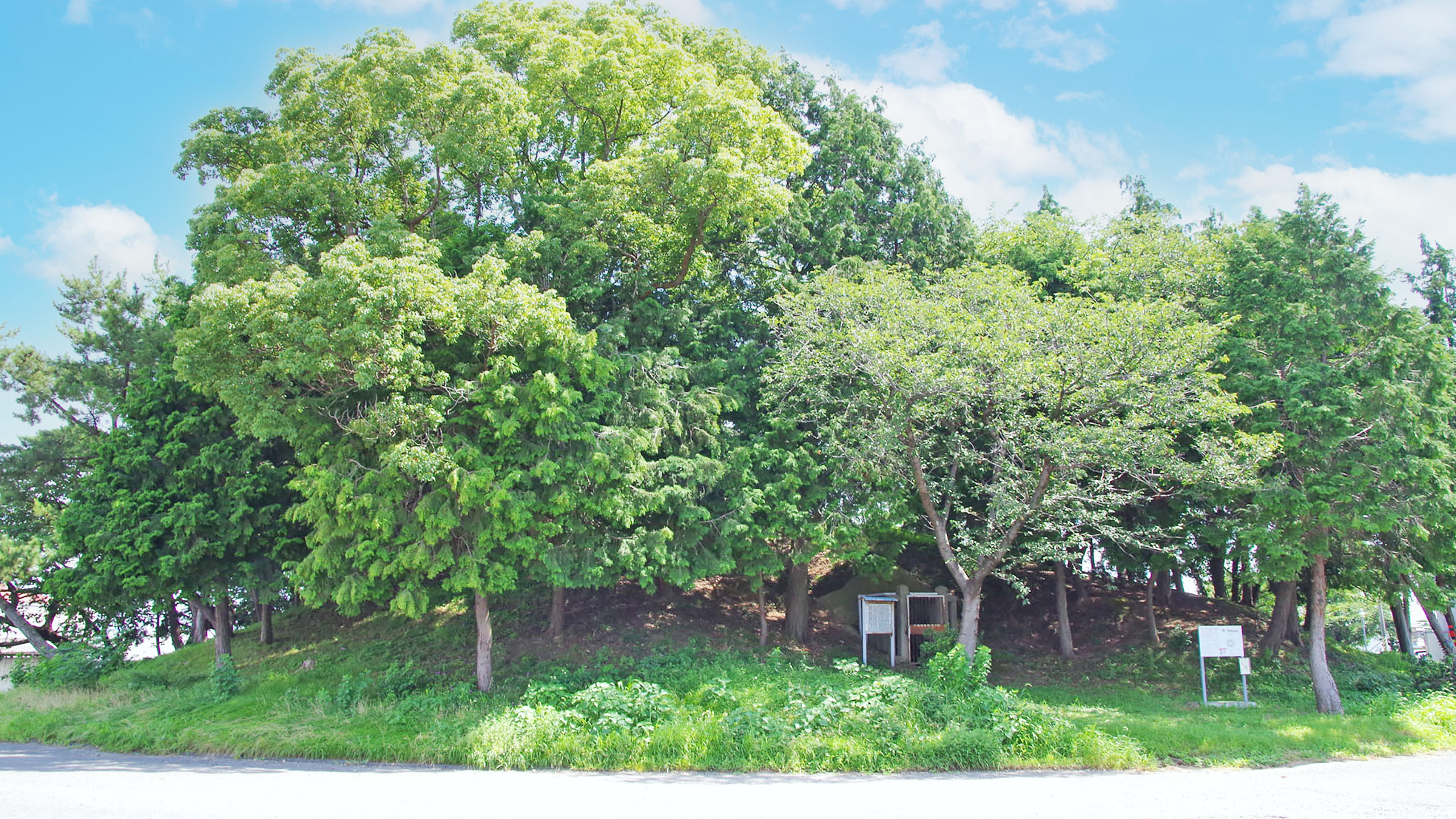
| address | 1678, Onohara-cho, Kanonji-shi, Kagawa 769-1611 |
|---|---|
| map | |
| shape | round burial mound |
| scale | Diameter 50.2m |
| burial facility | double-sided cave stone chamber |
| Total length of stone chamber | 13.2m |
| back wall of the first room | piling up or covering three stories |
| Construction period | Early 7th century |
| car | Approximately 4 minutes (1.5 km) by car from the Onohara IC on the Takamatsu Expressway |
| train | Approximately 4 minutes by cab from JR Toyohama Station (2 km) |
- Onohara Tumulus Group
- glossary
○Wankashizuka burial mound
Location: Behind the main shrine of Onohara Hachiman Shrine
○Iwakurazuka burial mound
Location: On the grounds of Jiunji Temple
○Kakuzuka burial mound
Location: West side of Onohara Central Park
This is a very rare group of burial mounds in Japan, with four burial mounds with horizontal stone chambers, the largest or the largest in Shikoku, located within a 700-meter diameter area.
Round burial mound: An ancient burial mound with a circular mound
Houfun: An ancient burial mound with a square-shaped mound
Tomb mound: A mound built of earth and pebbles.
Moat: A moat dug around a burial mound.
Enjodo: a passageway leading to the outside of the tomb.
Stone chamber: A tomb chamber piled up with natural or processed stones.
Genshitsu: a room in which the remains of the deceased were placed.
Sue ware: Ceramic earthenware produced in Japan between the Kofun and Heian periods.
Granite: Relatively coarse-grained rock composed mainly of quartz and feldspar.

